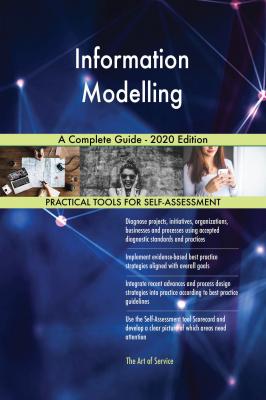Information Modelling A Complete Guide - 2020 Edition. Gerardus Blokdyk
Читать онлайн.| Название | Information Modelling A Complete Guide - 2020 Edition |
|---|---|
| Автор произведения | Gerardus Blokdyk |
| Жанр | Зарубежная деловая литература |
| Серия | |
| Издательство | Зарубежная деловая литература |
| Год выпуска | 0 |
| isbn | 9781867460060 |
<--- Score
57. Who needs to know?
<--- Score
58. What are the minority interests and what amount of minority interests can be recognized?
<--- Score
59. For your Information Modelling project, identify and describe the business environment, is there more than one layer to the business environment?
<--- Score
60. What should be considered when identifying available resources, constraints, and deadlines?
<--- Score
61. How are training requirements identified?
<--- Score
62. Will new equipment/products be required to facilitate Information Modelling delivery, for example is new software needed?
<--- Score
63. Who are your key stakeholders who need to sign off?
<--- Score
64. Does Information Modelling create potential expectations in other areas that need to be recognized and considered?
<--- Score
65. Consider your own Information Modelling project, what types of organizational problems do you think might be causing or affecting your problem, based on the work done so far?
<--- Score
66. Is the quality assurance team identified?
<--- Score
67. How are you going to measure success?
<--- Score
68. What vendors make products that address the Information Modelling needs?
<--- Score
69. What training and capacity building actions are needed to implement proposed reforms?
<--- Score
70. Are there recognized Information Modelling problems?
<--- Score
71. How do you recognize an objection?
<--- Score
72. Where do you need to exercise leadership?
<--- Score
73. Which information does the Information Modelling business case need to include?
<--- Score
74. What needs to be done?
<--- Score
75. Have you identified your Information Modelling key performance indicators?
<--- Score
76. Do you need to avoid or amend any Information Modelling activities?
<--- Score
77. Are you dealing with any of the same issues today as yesterday? What can you do about this?
<--- Score
78. How do you identify subcontractor relationships?
<--- Score
79. What needs to stay?
<--- Score
80. What are the clients issues and concerns?
<--- Score
81. What is the extent or complexity of the Information Modelling problem?
<--- Score
82. What are the stakeholder objectives to be achieved with Information Modelling?
<--- Score
83. Which issues are too important to ignore?
<--- Score
84. Are problem definition and motivation clearly presented?
<--- Score
85. Are your goals realistic? Do you need to redefine your problem? Perhaps the problem has changed or maybe you have reached your goal and need to set a new one?
<--- Score
86. What situation(s) led to this Information Modelling Self Assessment?
<--- Score
87. Are employees recognized for desired behaviors?
<--- Score
88. Which needs are not included or involved?
<--- Score
89. What does Information Modelling success mean to the stakeholders?
<--- Score
90. Are there Information Modelling problems defined?
<--- Score
91. Why the need?
<--- Score
92. As a sponsor, customer or management, how important is it to meet goals, objectives?
<--- Score
93. What is the problem and/or vulnerability?
<--- Score
94. Why is this needed?
<--- Score
95. Who should resolve the Information Modelling issues?
<--- Score
96. Does your organization need more Information Modelling education?
<--- Score
97. What would happen if Information Modelling weren’t done?
<--- Score
98. How do you identify the kinds of information that you will need?
<--- Score
Add up total points for this section: _____ = Total points for this section
Divided by: ______ (number of statements answered) = ______ Average score for this section
Transfer your score to the Information Modelling Index at the beginning of the Self-Assessment.
CRITERION #2: DEFINE:
INTENT: Formulate the stakeholder problem. Define the problem, needs and objectives.
In my belief, the answer to this question is clearly defined:
5 Strongly Agree
4 Agree
3 Neutral
2 Disagree
1 Strongly Disagree
1. Are accountability and ownership for Information Modelling clearly defined?
<--- Score
2. How would you define the culture at your organization, how susceptible is it to Information Modelling changes?
<--- Score
3. How will variation in the actual durations of each activity be dealt with to ensure that the expected Information Modelling results are met?
<--- Score
4. Have all of the relationships been defined properly?
<--- Score
5. What customer feedback methods were used to solicit their input?
<--- Score
6. When is the estimated completion date?
<--- Score
7. Will a Information Modelling production readiness review be required?
<--- Score
8. Is there a clear Information Modelling case definition?
